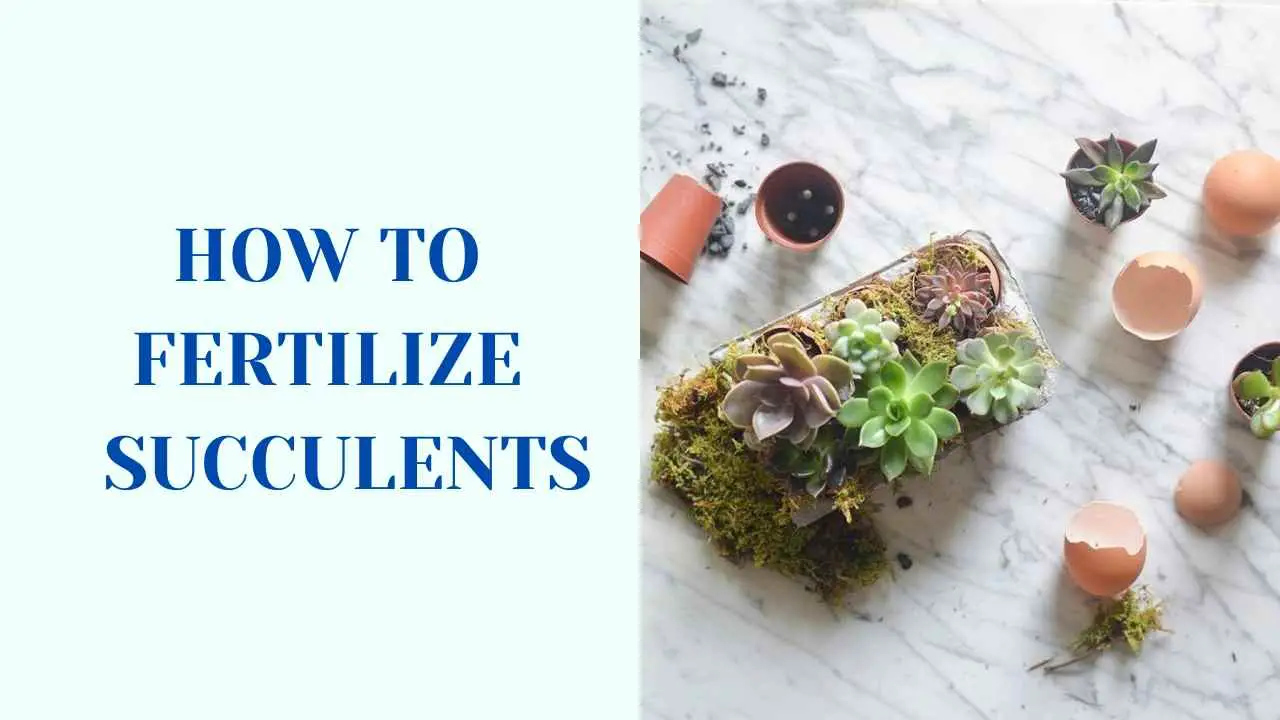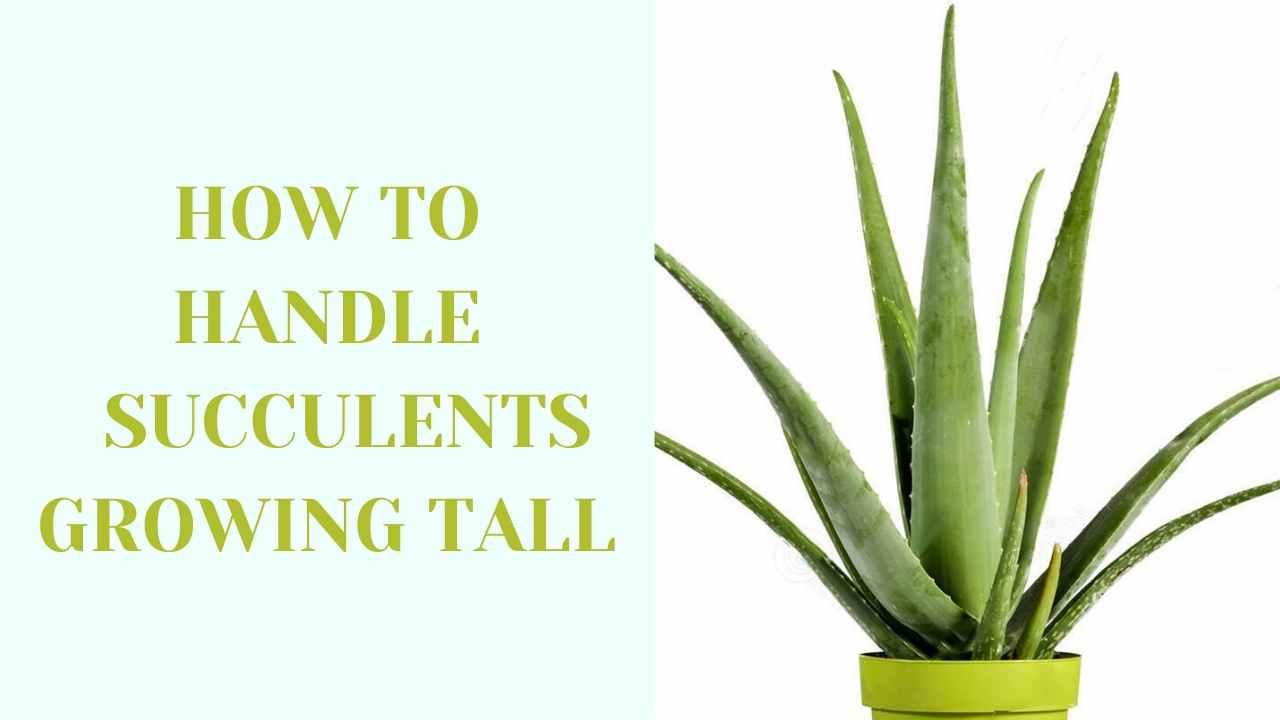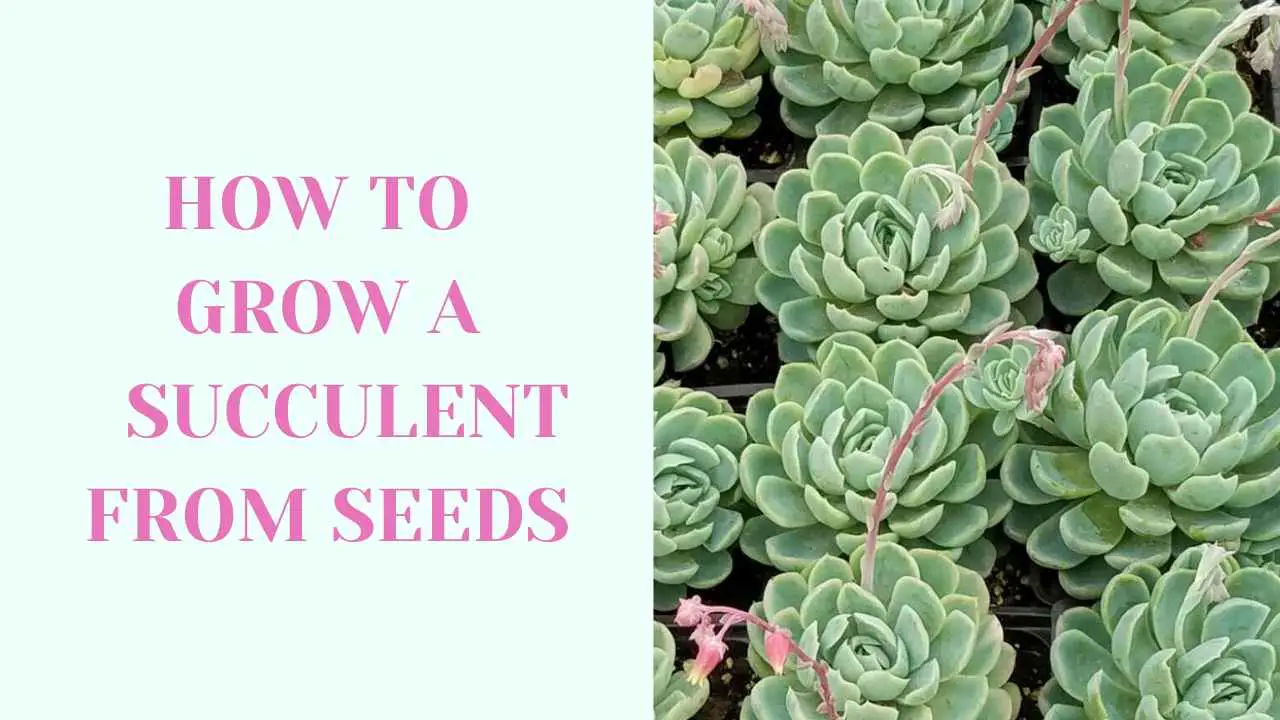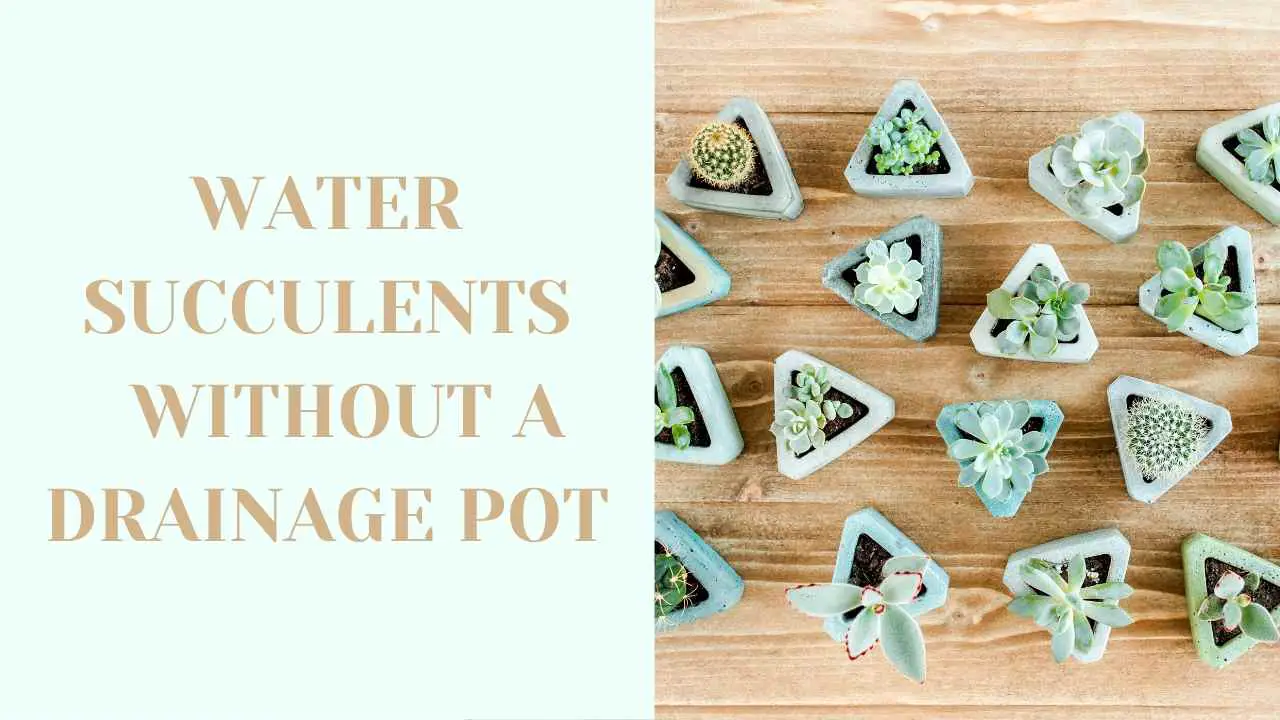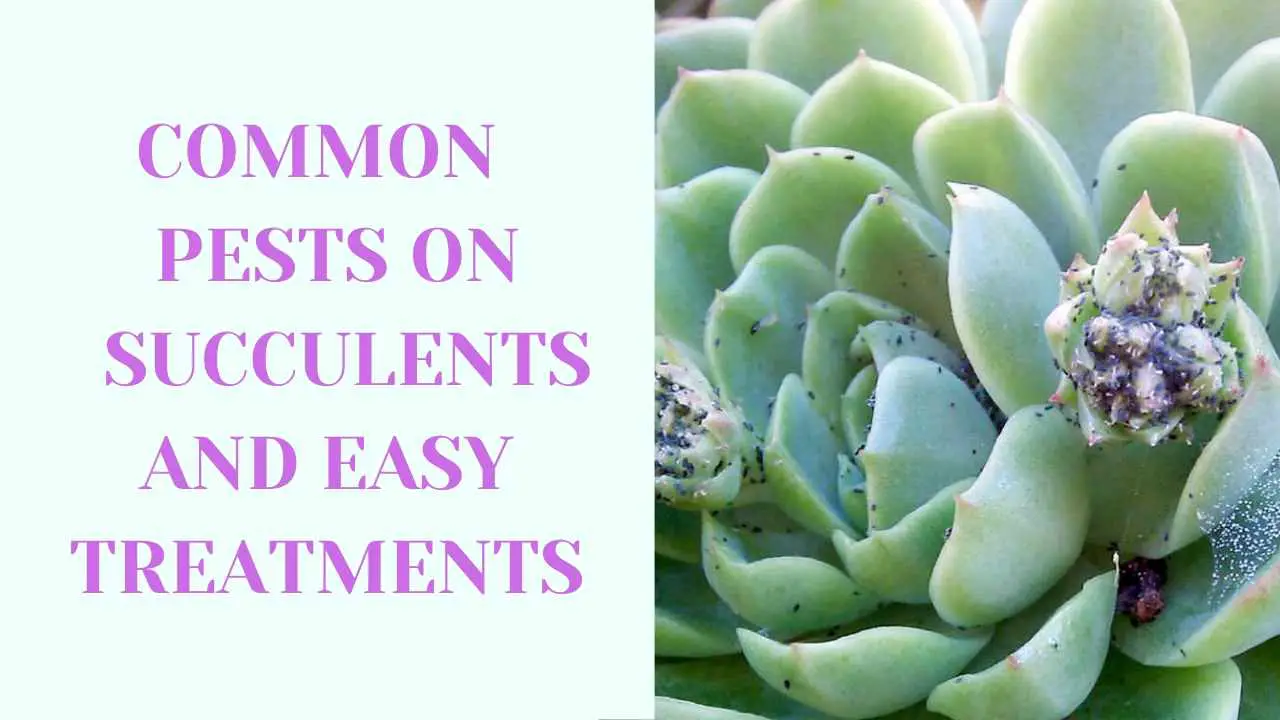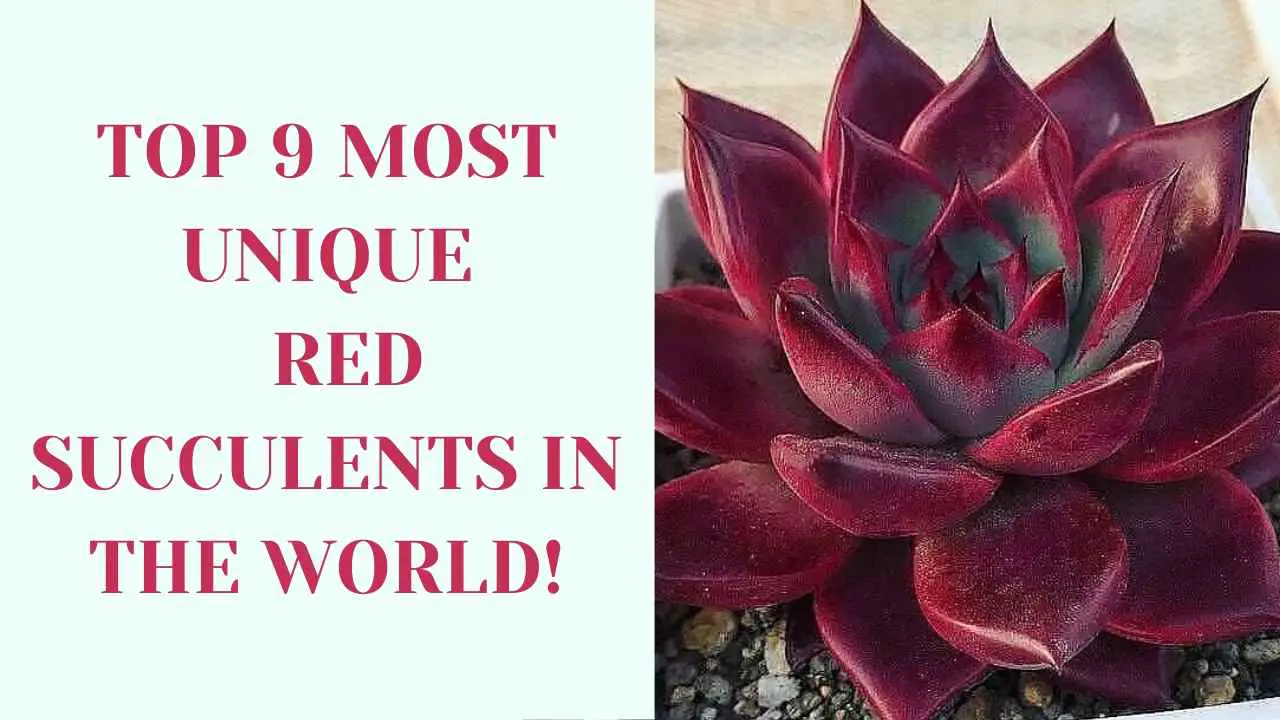Ruby Necklace, whose scientific name is Othonna capensis, is a trailing and fast-growing succulent plant. The plant is narrow and attractive due to its brightly colored stems and beautiful flowers. Its stems are thin and red or purple.
Ruby Necklace is one of the rarest succulent plants on the planet. Ruby Necklace’s stems usually grow up to about 5 cm then start trailing downwards. One interesting thing about Ruby Necklace is that its flowers can appear all year round, which gives it that eye-catching look all the time.
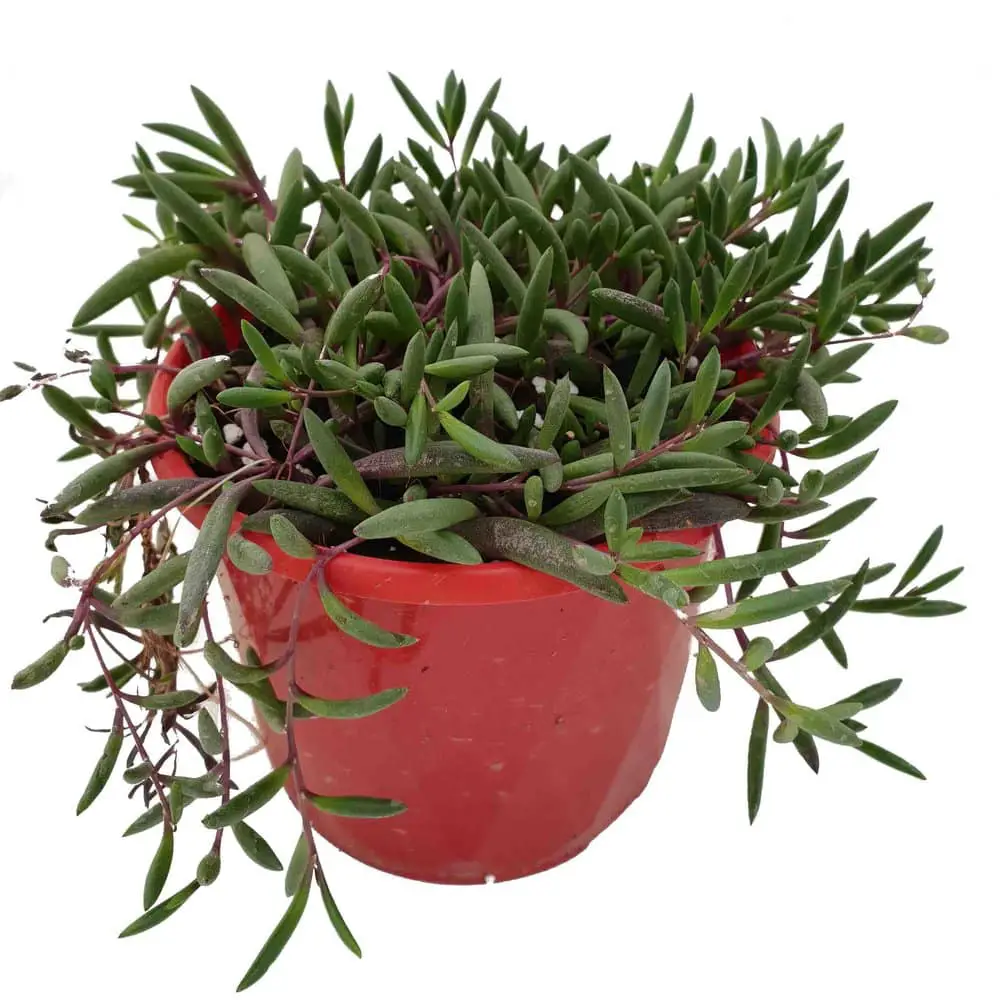
Picture via succulentsonline
How to Grow and Care for Ruby Necklace
Ruby Necklace does bet in desert and arid areas, but they usually avoid direct contact with the hot sun. Many Othonna species do much better when exposed to direct and hot rays of the sun. Othonna capensis grows best in a hanging basket but can also be grown in other places such as a rock garden.
It can also be developed as a houseplant indoors, but it will require enough light and space to grow well. Othonna capensis also does well in greenhouses if given the right conditions such as enough water and sunlight.
It is also essential to protect the plant from direct sunlight during the summer seasons. The early morning sun is suitable for Ruby Necklace plant because it gives enough stress to keep the daisy-like flowers in great color and shape.
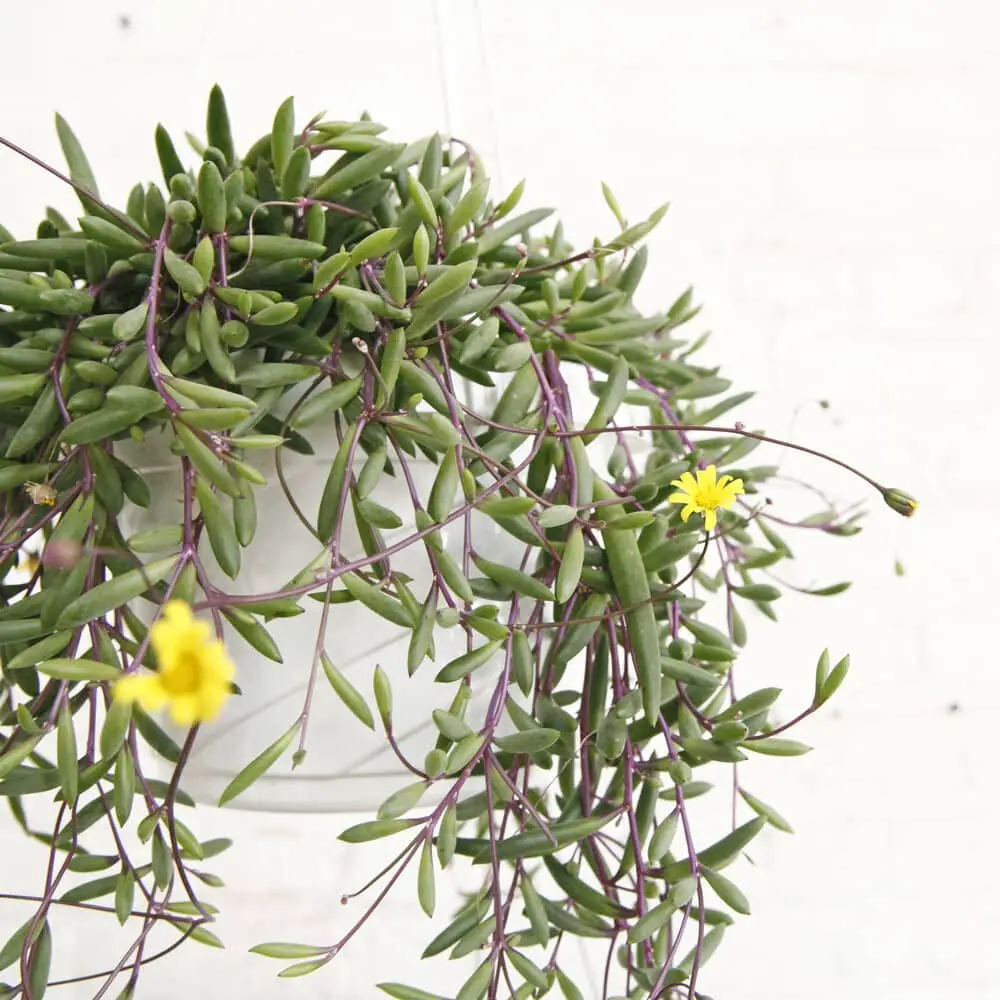
Picture via othertimesvintage
During the growing season, the plant will do reasonably well, and its daisy-like flowers will blossom. It is also vital for someone growing this plant to know that it should not be kept at a temperature that is below 10 degrees Celsius because it does better in moderate weather.
During the warmer months, it is recommended to place them in the shade. During this period, the Ruby Necklace plant goes into dormancy, and it should not be watered.
When the weather cools down, they usually start growing on their own, but a little wetness will be great for them to begin leafing out well. When the soil is too heavy and wet, the roots of the plant usually rot away.
This is why the land needs to be well-drained, and this point explains why the plant does better in arid regions where drainage is exceptionally high.
The best thing about the plant is that it does not require a lot of fertilizer to grow. This makes it efficient for anyone that looks forward to saving applying fertilizer all the time, which might attract extra costs and time.
Application of a general fertilizer just once or twice a year makes it stable and keeps it healthy throughout the year. The reason why the plant doesn’t need a lot of fertilizing is that it is resistant to most pests. Overfertilizing Ruby Necklace is also not recommended because it causes abnormal growth. The red-violet stems usually bloom during spring from around May to June.
During its blooming period, the plant needs a moderate amount of water to keep it fresh. As said earlier, too much water may cause wetness leading to root rot. For that reason, Ruby Necklace should only be watered when it is dry but not daily.
Ruby Necklace Plant Is An Xeric Plant
Ruby Necklace plants can do well in xeric gardens. Xeric gardening is the type of landscaping that allows one to grow plants that do not need to be supplemented with water from time to time. Ruby Necklace is suitable in xeric gardens due to its nature of growing in arid and semi-arid regions where it does not need a lot of water for its growth and survival.
The other reason that makes Ruby Necklace suitable for xeric gardens is its attractiveness. The plant blends well with different colorful flowers available in a xeric garden.
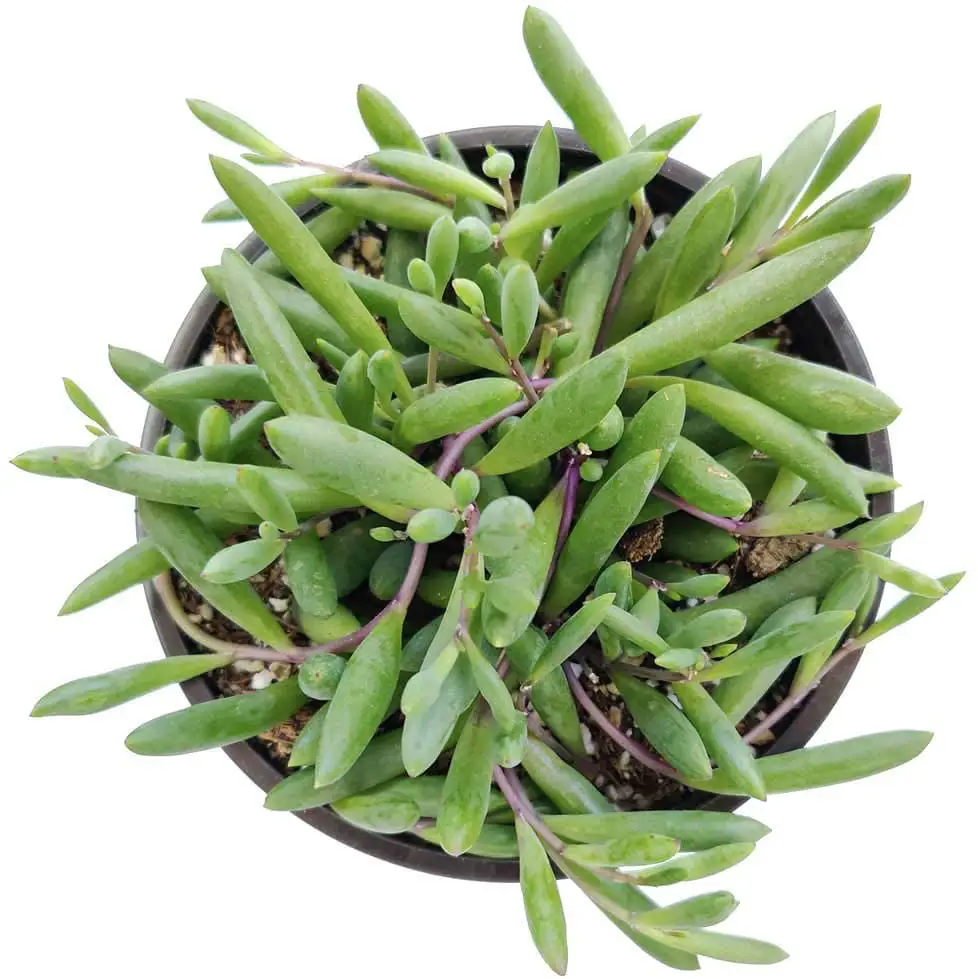
Picture via Amazon
Balcony/Patio Plant
Ruby Necklace is a great and suitable plant for a balcony due to several reasons. The plant consumes much less water than other species of flowers to keep in a balcony. For that reason, Ruby Necklace can survive on its own without requiring much attention by the owner to water it. Since over watering the plant many times might cause its roots to rot, keeping it dry makes it one of the best plants to keep in a balcony.
The other reason is that the plant requires space and a little bit of light to blossom. For that reason, a balcony makes it suitable for it. Ruby Necklace is also a great patio plant due to its nature of growth. Due to the fact that trails downwards, makes it best to grow in a basket.
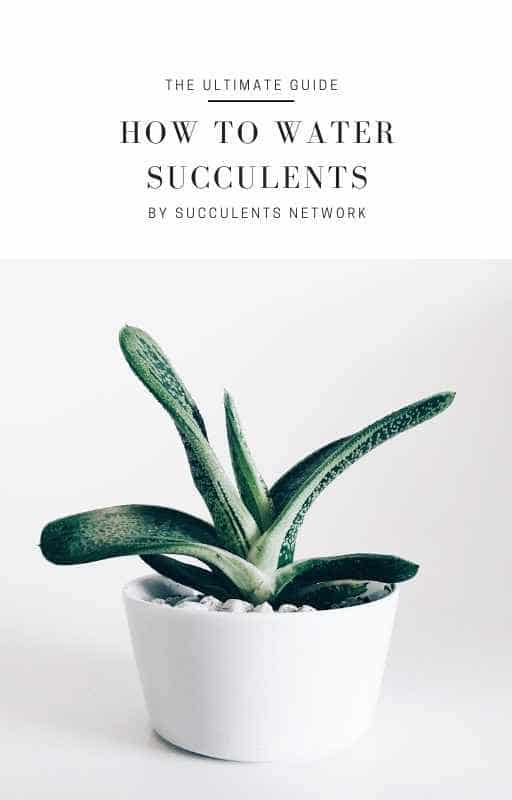
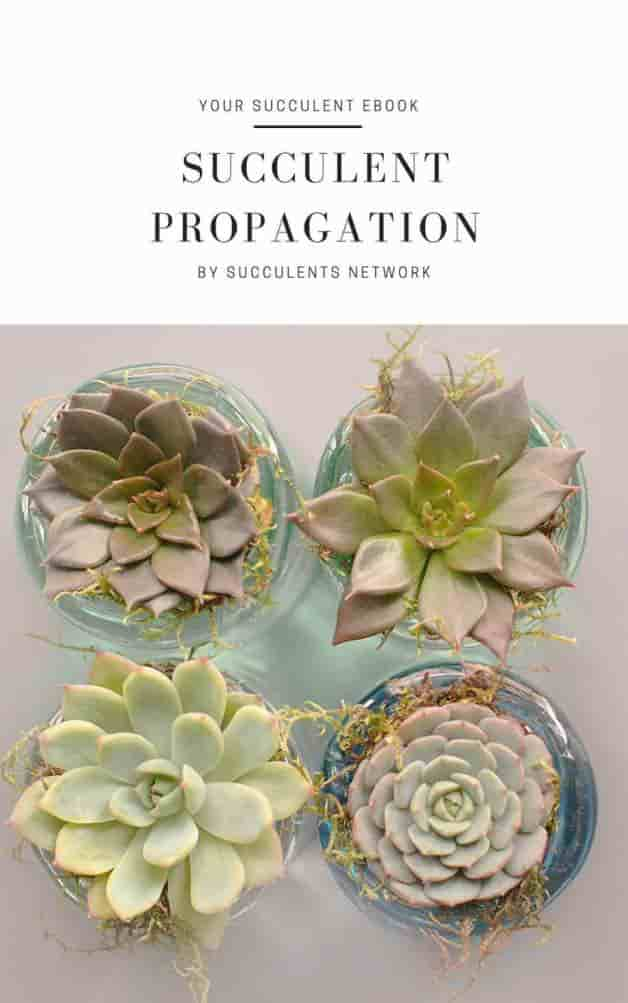
Potted Specimen
During a lab test, a plant usually is held in a container mostly a pot for it to be tested. Ruby Necklace is one of the best plants to hold in a specimen container. This plant is suitable for this purpose due to its succulent nature of holding water for long periods. The fact that it does not consume a lot of water also makes it one of the best-potted specimen plants in the world. It can, therefore, be used in the laboratory for tests without worrying that it might wither out or need much water to survive.
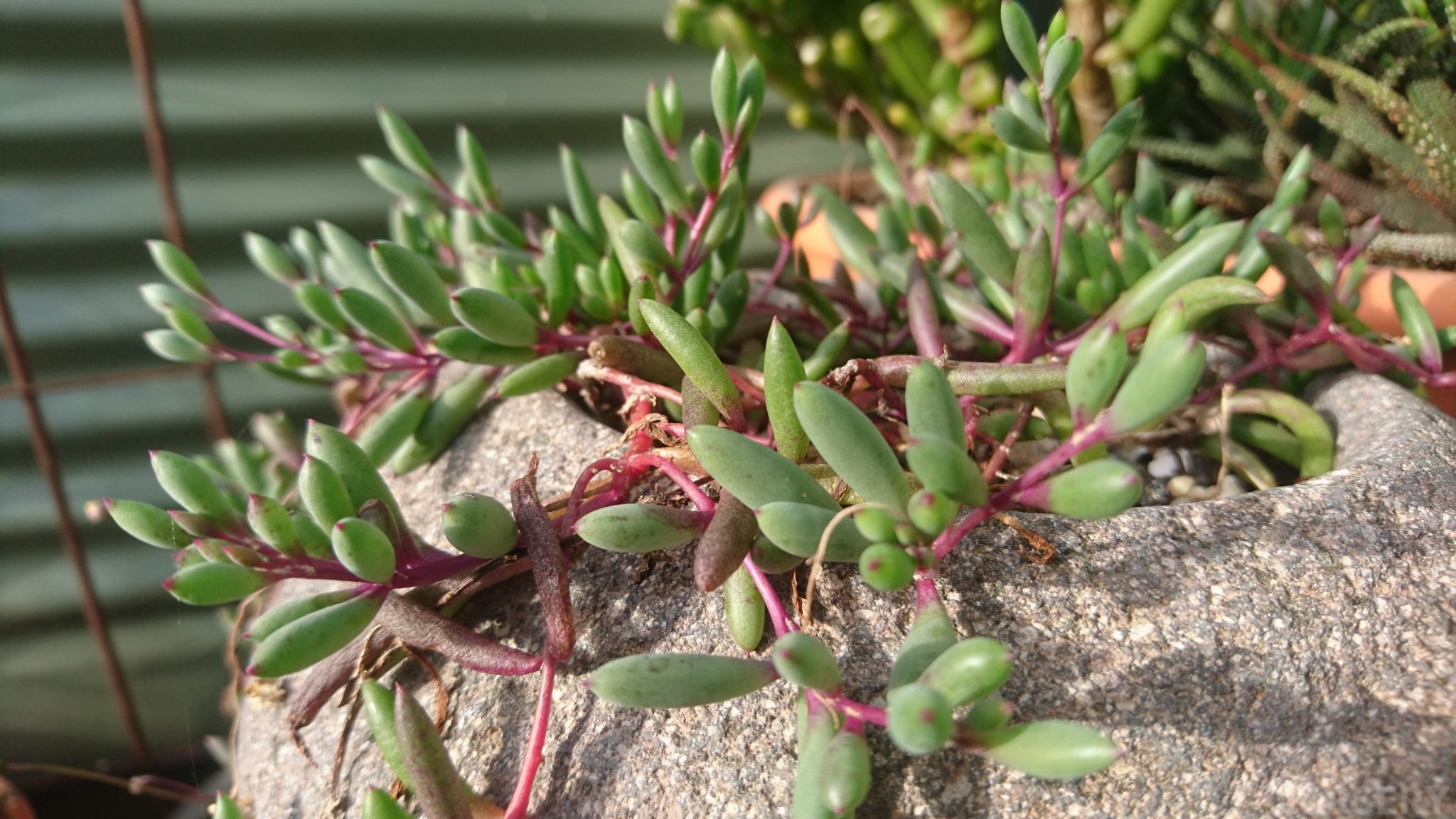
Picture via oxleynursery
Hanging Basket
Several reasons make Ruby Necklace qualify as one of the best hanging basket plants. The main one is its growing nature of trailing downwards. The fact that it trails downwards means that the plant will need an open space to grow. A hanging basket makes the best habitat for Ruby Necklace through providing enough room.
A stationary basket placed on the floor may not be suitable because the plant will lay on the ground for its growth, which may not be ideal due to interference from human beings. Unless the ground is rockery and out in the garden where the plant will not be disturbed, then it needs to grow in a hanging basket. A hanging basket is also crucial since it will expose it to more light and air sufficient air circulation for its growth.

Picture via Succulentbox

